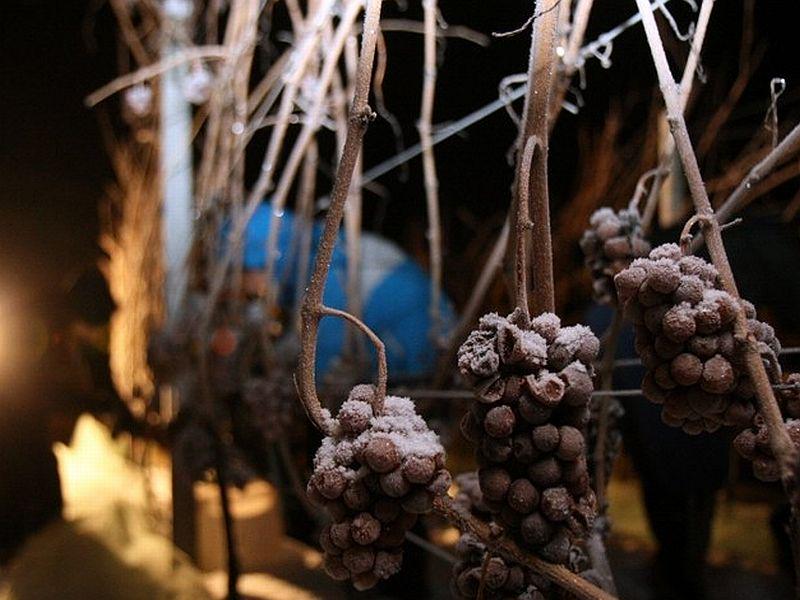Slovenia is a land known for its wine. Its many hills and valleys have given rise to a wide variety of quality wines, some of which are even finding recognition beyond the country’s borders. In recent years, however, some wineries have decided to offer something even more special – and have begun to sell ice wine.
Ice harvests take place long after the regular grape harvest. First, several specific weather conditions have to be met. Most importantly, the temperature must average -7 seven degrees Celsius (about 20 degrees Fahrenheit) for a period of three days and nights. Only then can a team of grape pickers head into the vineyards, often under the cover of night, to begin picking the frozen grapes. Sometimes, ice harvest can take place in December, but more often than not, the right conditions don’t arrive until January.
When the grapes freeze on the vine, crystals form inside each berry, causing the density of the grape to rise. As long as the berries are pressed when they are still frozen, the resulting wine is sweet and full-bodied – a perfect dessert offering.
Two agencies make sure that all ice wine matches specific criteria by monitoring the sugar content in the wine and determining if the weather conditions are just right. One of these two conditions must be met for the wine to be marketed as genuine ice wine. A number of wineries around Slovenia now make their own ice wine; among the most unusual is the Pleterje Charterhouse – an ancient monastery in the hills of the Dolenjska region.
Unfortunately, ever-warmer winters are placing the future of Slovenian ice wine in question. Several times, the first long-lasting freezes have happened late in the season, preventing the ice harvest from taking place altogether. Still, local winegrowers are optimistic about their relatively new product. Even though only a very small percentage of Slovenian wine consists of ice wine, the product’s unique flavors serve as yet another reminder of Slovenia’s diverse winemaking tradition.
Jaka Bartolj


































































